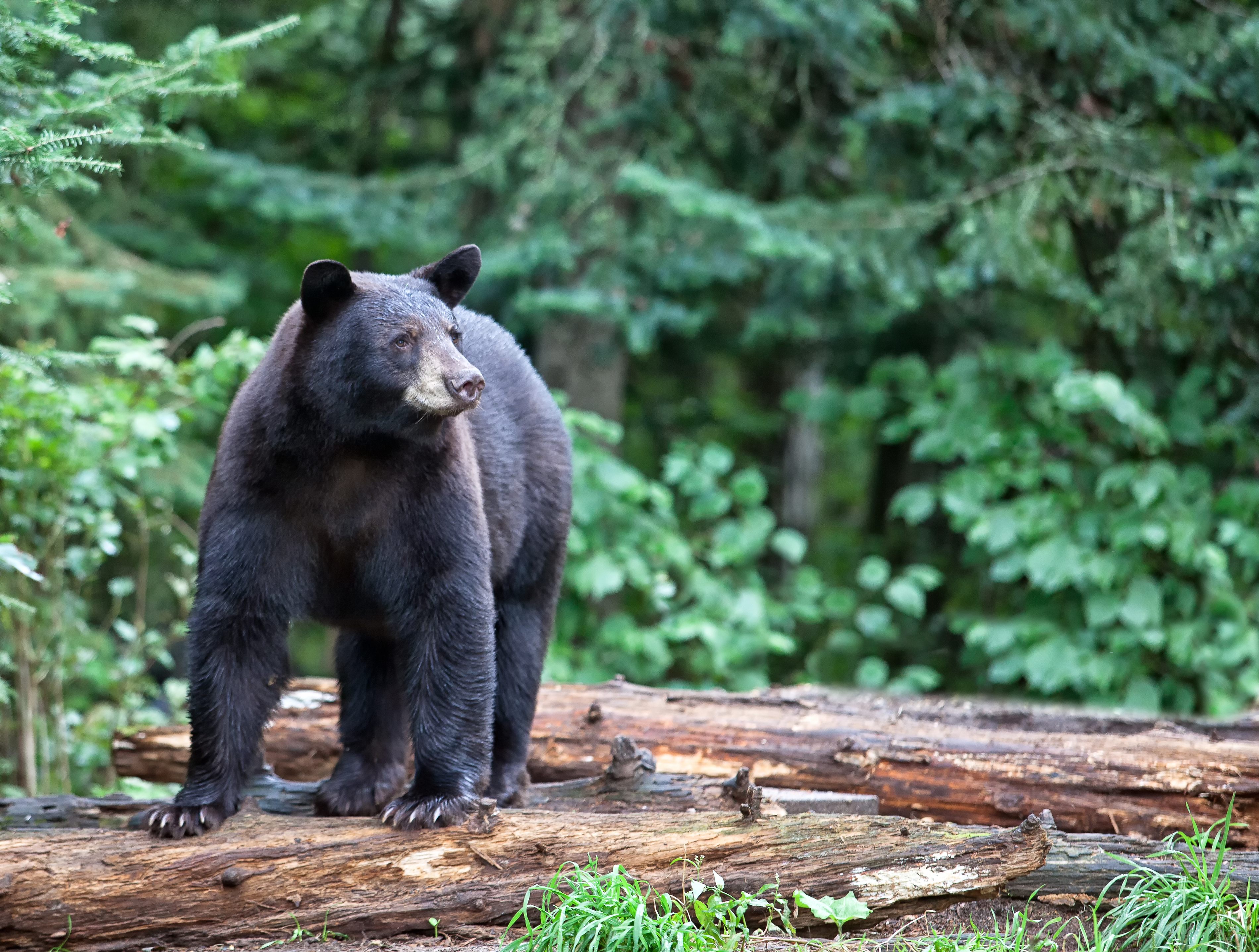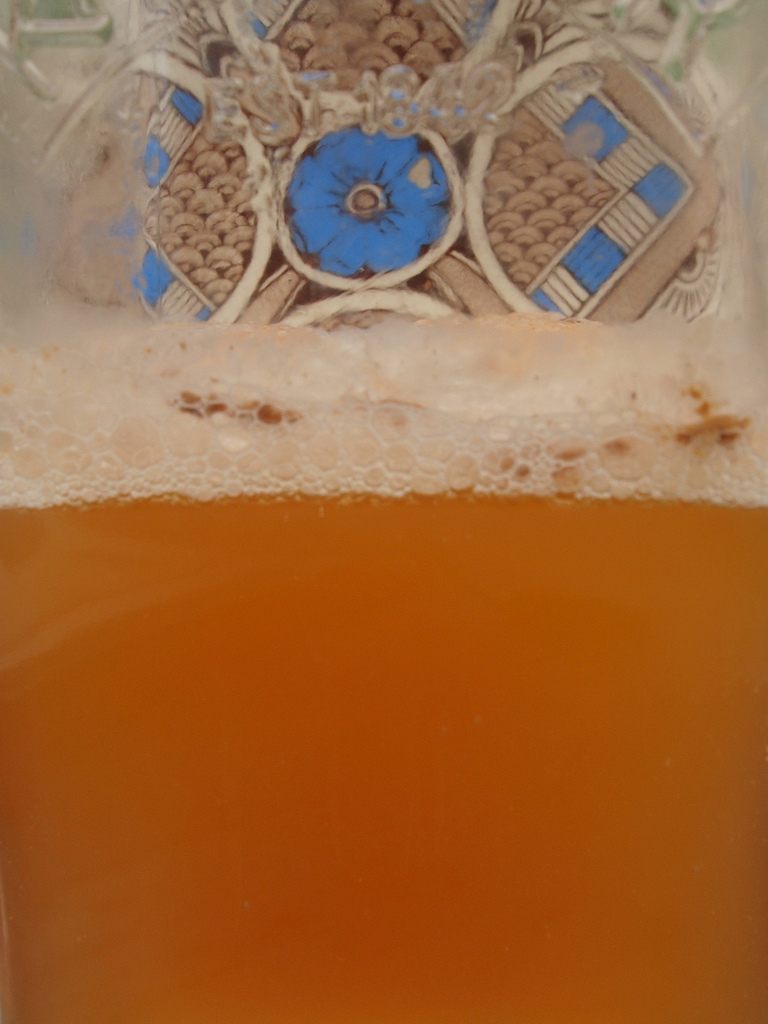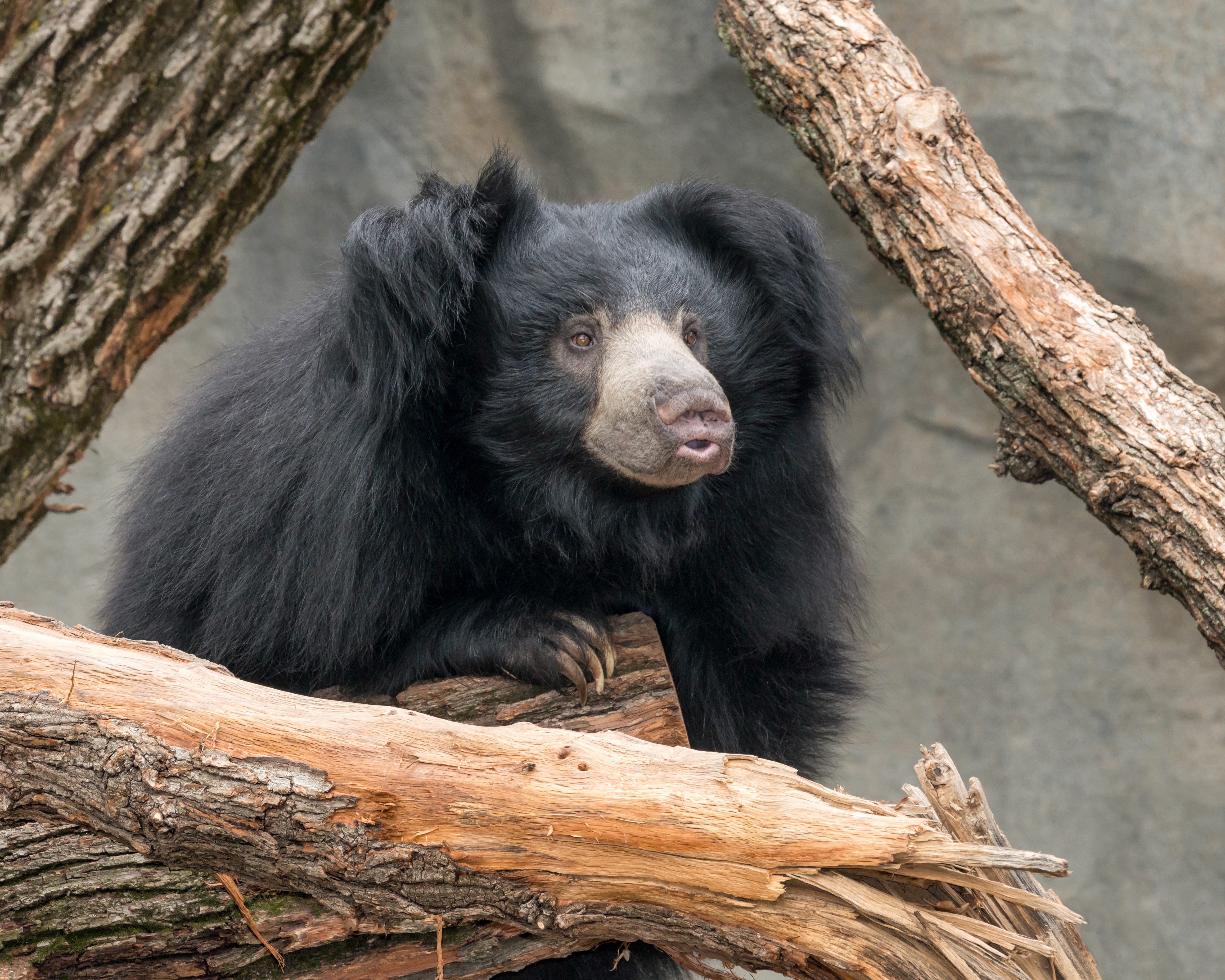Investigation: Do Bears Get Drunk Off Rotting Fruit?
 A black bear in Minnsota. (Photo: Critterbiz/shutterstock.com)
A black bear in Minnsota. (Photo: Critterbiz/shutterstock.com)
We humans never seem to tire of stories about drunk animals—horses that topple into pools, birds that fly erratically, moose that get stuck in trees. One of the most commonly cited examples is that of the drunk black bear, stumbling around after indulging in too many apples. “A 500-pound black bear reportedly drunk on fermented apples rampaged through Port Coquitlam, British Columbia, this week,” reads one example of the form. There are many videos purporting to show apple-drunk bears. Here’s another: “This bear got drunk by eating fermented apples and was found intoxicated, wobbling around a neighborhood in Lyons, Colorado,” reads the caption.
It makes sense, sort of: this bear is acting weird, bears love apples, and apples can ferment, right? Why wouldn’t alcohol impair mammals in similar ways?
On the other hand, stories of bears drunk on fermented apples is anecdotal. Nobody has ever measured the blood alcohol level of one of these supposedly-wasted bears. So how do we crack the case of the drunk-seeming bear?
For starters, alcoholic animal research does exist. Some animal species can get drunk; there are plenty of studies in which scientists get rats drunk to test out various theories. (Here’s a good one: nicotine sobers you up, apparently, if you’re a rat.)
Others seem unable to, or at least have a wicked tolerance for alcohol.
The pen-tailed treeshrew, a small mammal native to southeast Asia, is noted for consuming copious amounts of the nectar of the bertram palm. This nectar, when tested, proved to have an alcohol level of 3.8 percent by volume, the same as a Beck’s Light beer. Yet the treeshrews exhibited absolutely no signs of drunkenness. Same with Asian elephants known to eat the fermented fruit of the marula tree.
That palm nectar is unusual in that it is a naturally occurring alcohol that’s readily available and of a decently high alcohol by volume percentage. Alcohols themselves are extremely common; alcohol is caused when various microorganisms, especially yeasts, ingest sugars and excrete alcohol. This can happen in either an aerobic (“with oxygen”) or anaerobic (“without oxygen”) environment, but all manmade alcohols are created in anaerobic environments for efficiency’s sake. When exposed to oxygen, yeasts tend to reproduce rather than focusing on eating sugar and farting out alcohol, which means aerobic fermentation produces very low-ABV alcohol at best. In addition, the presence of oxygen triggers various other small critters to break down the alcohol into acid, which is why if you leave red wine out in the open for a few weeks, you’ll end up with red wine vinegar.
 Fermenting apple juice. (Photo: Nikki Tysoe/flickr)
Fermenting apple juice. (Photo: Nikki Tysoe/flickr)
The method proposed by those who think black bears get drunk on fermented apples is this: Apples fall off the tree, begin to rot and ferment, and bears eat them. The apples continue to ferment in the bear’s stomach, releasing alcohol, which gets the bear drunk.
In an ode to making hard apple cider, Willy Blackmore at The Awl wrote:
This is how you make hard apple cider: simply put, do nothing. Apples are sweet, and their skins are covered with wild yeasts, giving you the only two ingredients needed to make alcohol. Yeast devours sugar and booze is born.
This is true, but if you want hard apple cider, you have to separate the non-alcoholic cider from oxygen by putting it in a sealed container where no oxygen can enter. Leaving an apple to rot on the ground is extremely inefficient. “Availability of ethanol at concentrations higher than those attainable by yeast fermentation alone (i.e., 10– 12%) is a very recent event in human history,” writes Robert Dudley in a study entitled “Ethanol, Fruit Ripening, and the Historical Origins of Human Alcoholism in Primate Frugivory” in the journal Integrative and Comparative Biology. Of the fruits Dudley tested, only palm fruits ever broke the 1 percent alcohol by volume barrier. A 1982 study of various Finnish fruits found that fruits like rosehips, rowan berries, and hawthorn fruits (the latter is closely related to the apple) could only attain an ABV of between 0.05 and 0.3 percent.
“One of the issues with fermented fruit is that it would take a lot to get a bear drunk. You know, people don’t get drunk from fermented apples either,” says Darrell Smith, a wildlife biologist at Western Wildlife Outreach, a scientific outreach program dedicated to educating the people of Washington and the northwest about large mammals, including several varieties of bear. Black bears can eat a lot, easily consuming 20 pounds of food in a sitting, but that’s still an extremely minimal amount of alcohol, and given the fact that a mature male black bear can weigh up to around 600 pounds—well, it’s just very unlikely to cause intoxication. “I’ve heard of that, but it’s very anecdotal, I think,” says Smith.
Size would play a large role in an animal’s ability to become intoxicated. “It probably wouldn’t take as much to intoxicate, say, a 75-pound bear, a young bear,” says Dave Garshelis, a wildlife research scientist with the Minnesota Department of Natural Resources who’s led the department’s bear research project for over 30 years. But it’s still unlikely; even a 75-pound bear would have to suck down hundreds of apples at their peak level of fermentation to even feel a buzz. Go further, though, and you might have something. Birds, especially the bohemian waxwing, have been reported to become drunk from fermented berries. The low alcohol percentage would still be enough to have an effect, given a small bird’s size. “Birds, small birds, with a body weight of a couple grams? Sure,” says Smith. “But bears eating fermented apples? I don’t think so.”
 A sloth bear. (Photo: Nagel Photography/shutterstock.com)
A sloth bear. (Photo: Nagel Photography/shutterstock.com)
An element of the “bears get drunk on fermenting apples” theory is that, well, sure, apples may not be highly alcoholic on the ground, but within the bear’s stomach, they continue to ferment and spit out alcohol. There are some problems with that notion. As omnivores, a black bear’s digestive system is not that dissimilar from our own. The ph content of a human stomach is between 1 and 3, and a bear’s is around a 3.5. Those are both extremely acidic environments; yeasts prefer a much less acidic environment, with a ph between 4 and 4.5. Neither our stomachs nor a bear’s stomach is a friendly place for yeast that wants to chew up sugar and spew out alcohol.
Even worse (for the yeasts, that is) a black bear’s digestive time is quite short, typically less than 48 hours. Even under optimal conditions, that’s not very much time for yeasts to go to town on the sugar in apples; think about how long it takes to brew beer or make wine, and those are under ideal circumstances.
There are likely to be other explanations for assumptions about an animal’s drunkenness on fallen, fermented fruit. Sloth bears in India, for example, are regularly accused of getting drunk on fruit from the mahua tree before attacking villagers. Or you could note that sloth bears are, arguably, the most violent and aggressive species of bear on the planet, well-known for attacking humans (and even tigers!) just because they feel like it.
Another example: back in 2008, a pony in Cornwall, presumed drunk, after definitively gorging on apples, fell into a pool and had to be elaborately rescued. The more likely explanation is that the pony’s digestive system is not set up to devour huge quantities of sugar-rich foods like apples; equines are better suited for grasses. It’s well-known that feeding equines fruits and vegetables can cause gases to build up in the animal’s stomach, and as horses are incapable of burping, the gas can be painful and even incapacitating. The Cornish pony probably was just in pain and not totally aware of its surroundings—but not because of alcohol.
The same is true of bears. Some might be sick, or obese, or sleepy, or otherwise acting strange. That’s not to discount the accounts of bears actually drinking alcohol, which is not common but not unheard of. “I’ve heard of them biting into a beer can,” says Garshelis. “They wouldn’t know what was in it, though. You know, they can’t read. But they could be biting into everything, and probably end up liking the taste of it.”
Bears: just like us. In that they are technically unable to become drunk from eating fallen apples.



Follow us on Twitter to get the latest on the world's hidden wonders.
Like us on Facebook to get the latest on the world's hidden wonders.
Follow us on Twitter Like us on Facebook